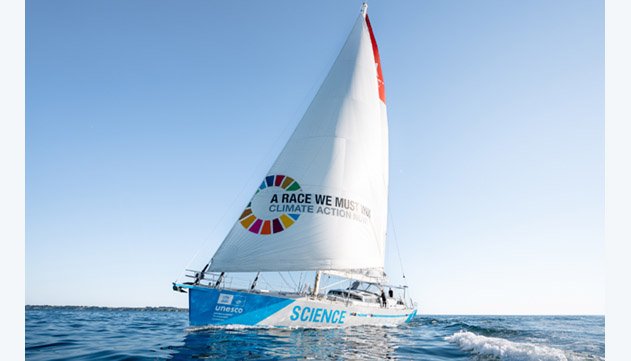Racing Team Launches Scientific Mission to Antarctica on Aluminum Sailboat

A team of researchers led by environmental advocate Boris Herrmann is undertaking an audacious scientific expedition to a remote archipelago at the north-eastern tip of the Antarctic Peninsula. The mission marks the maiden voyage for an aluminum sailboat and team best known for its competitive racing.
Team Malizia, a professional offshore sailing team that has been racing around the world, says its goal is to create awareness of environmental issues. Known as competitors in races including The Ocean Race and the Vendee Globe, this time they are setting off on a new 85-foot (26-meter) research vessel, Malizia Explorer. They departed Ushuaia, Argentina, for the Danger Islands to undertake a survey of the remote archipelago.
The sailboat, which is designed to navigate in both polar and tropical regions, is undertaking its first mission to Antarctica, having been launched in April this year. The vessel had to wait for several days in Ushuaia for a safe weather window to cross the Drake Passage before exiting the Beagle Channel and setting sail towards Antarctica.

Pre-departure from Ushuaia, Argentina (Malizia Explorer)
The interdisciplinary team of sailing professionals, scientists, and media creators hopes to reach the southern continent after roughly four days at sea and look for the next weather window in order to continue their journey to the Danger Islands, where they will begin the scientific operations planned within the Antarctic specially protected area (ASPA) in the expedition dubbed the Danger Islands 2025.
The Danger Islands, an archipelago at the north-eastern tip of the Antarctic Peninsula, consist of seven islands with a total area of around 4.5 square kilometers. Compared to the rest of Antarctica, the team reports that the peninsula is the most affected by global warming. However, it is considered a hotspot of biodiversity.
The islands are a breeding ground for a majority of Antarctic seabirds and a species-rich seabird community. It is also home to the largest population of Adelie penguins on the entire Antarctic Peninsula, with over one million breeding pairs. Germany has been spearheading efforts to safeguard the unique ecosystem and has placed the islands under strict protection with ASPA designation.
Team Malizia is highlighting that as part of Germany’s broader commitment to protecting Antarctica, researchers aboard Malizia Explorer will conduct the first detailed field study of the ecologically significant islands. The team will use drone mapping to study colonies, investigate food chains, vegetation and biodiversity, and monitor microplastic and chemical contamination, as well as take water profiles.
The team is expected to return to Ushuaia by mid-December with findings that could help lay the groundwork for future ocean protection efforts. In particular, the data collected is intended to help improve global climate models and support political decision-making.
“Over the next month, we will be operating in an exceptional environment, doing science more sustainably and sharing the experience openly with the public,” said Herrmann, Team Malizia founder and expedition leader.
The team includes researchers from the Alfred Wegener Institute for Polar and Marine Research, the Thuringian Institute of Sustainability and Climate Protection, and the German Environment Agency.
